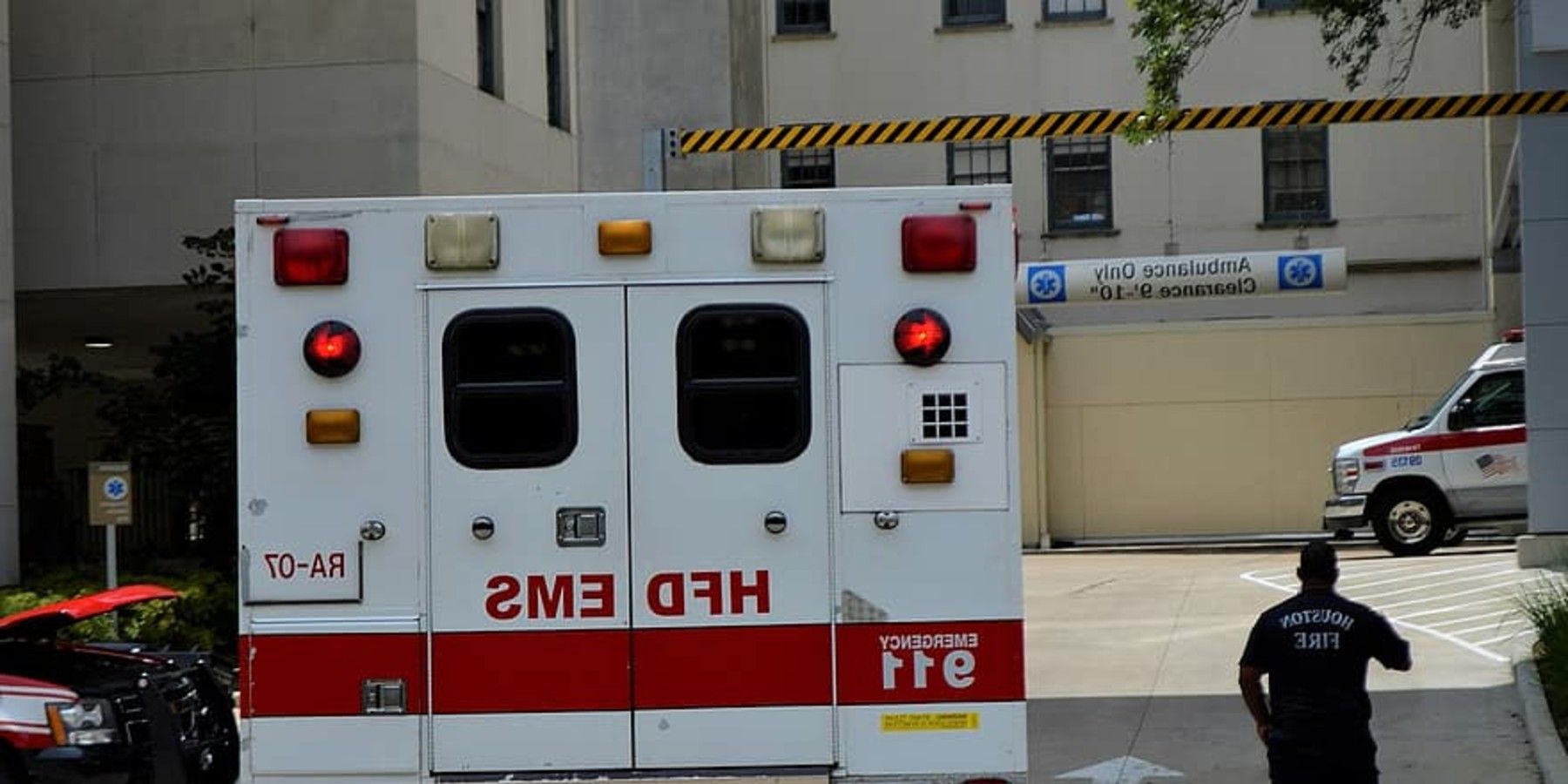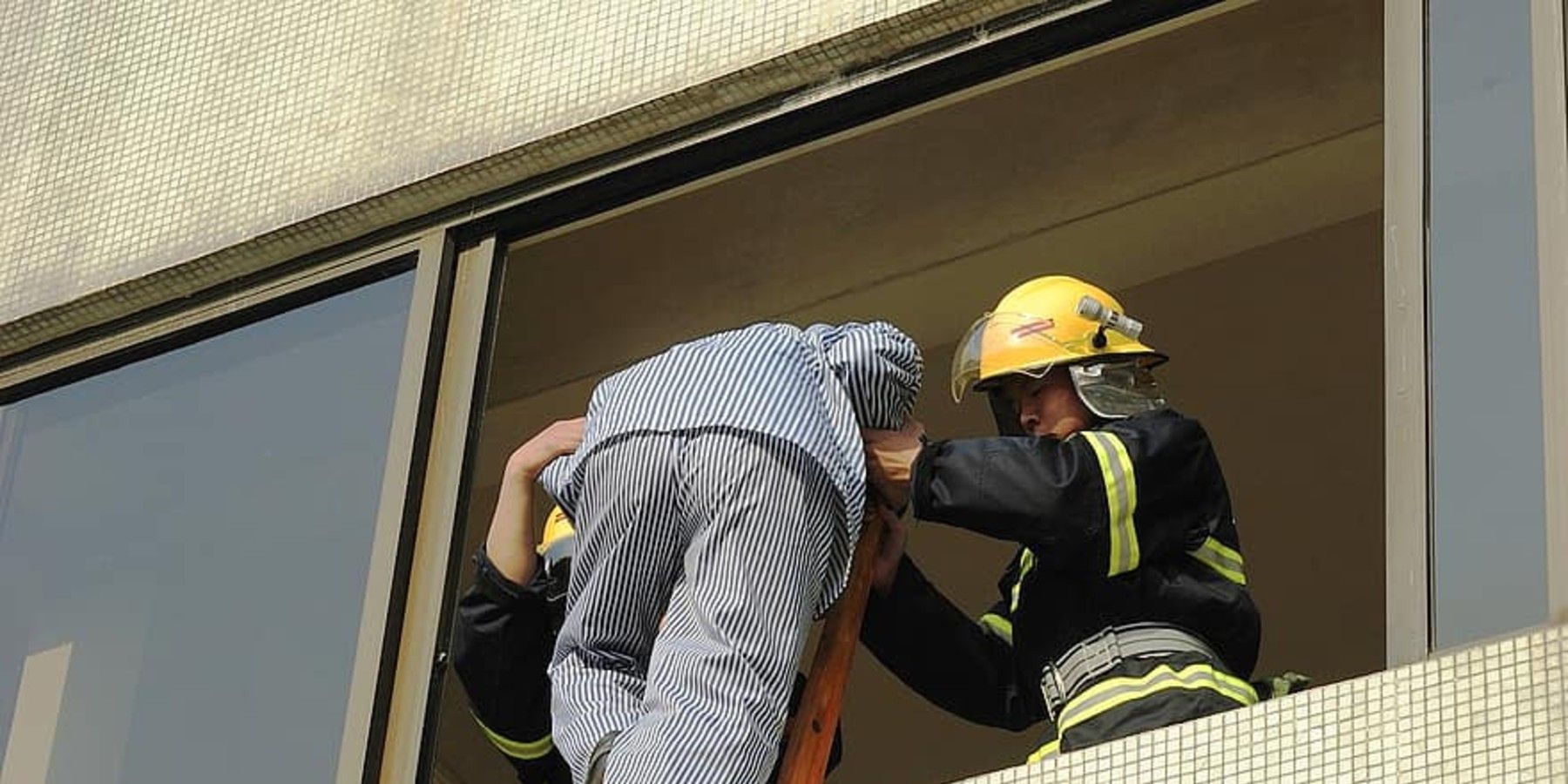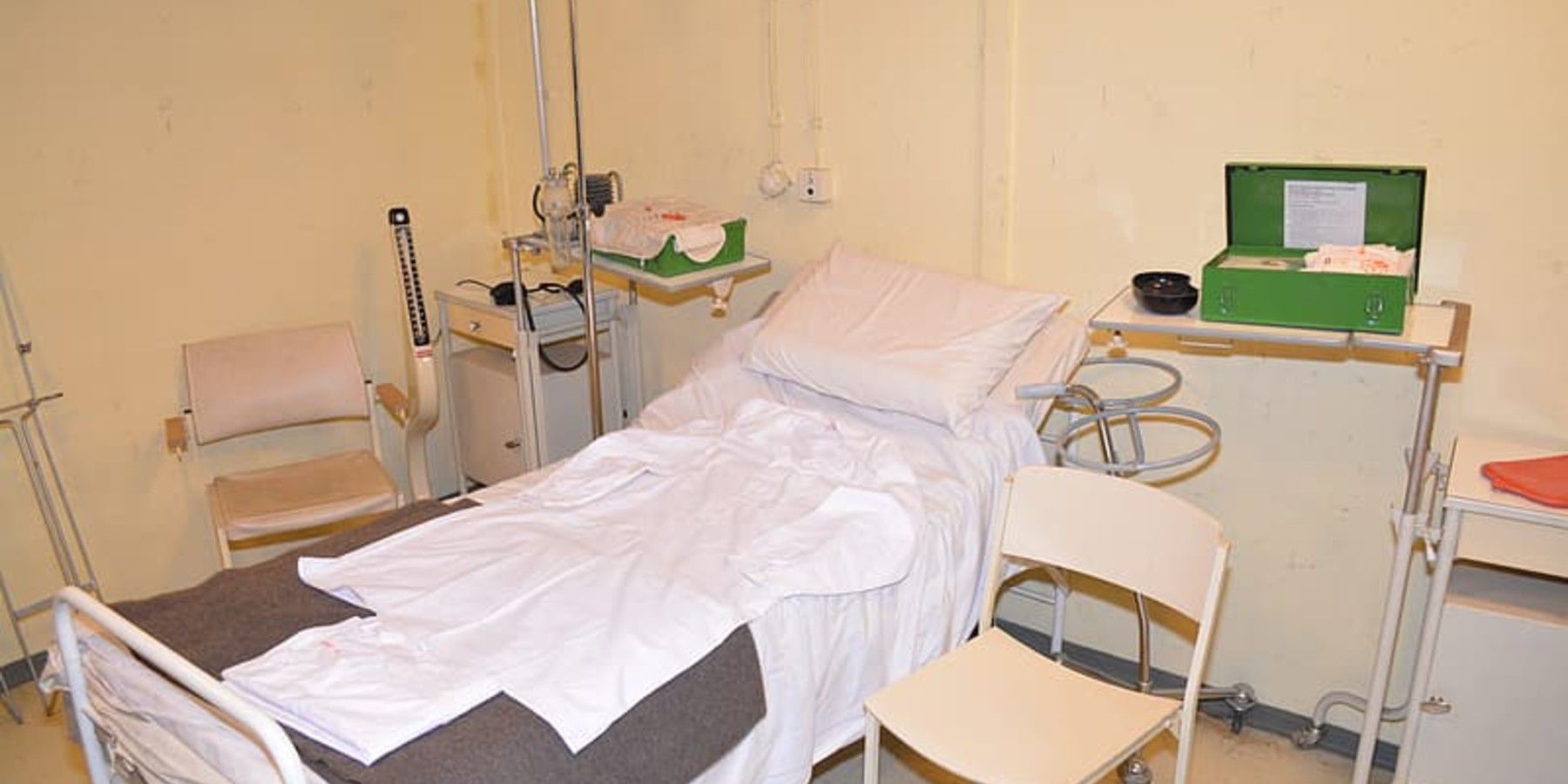This article was originally published on September 11, 2016. It was updated on September 6, 2020 by Kirstie Landry
Having a baby often means spending multiple days in a hospital room, away from home, subject to lots of noises and medical terminology that sound foreign to them. But among all of the specific wording that doctors toss out when referring to birth, there are also the many hospital codes. Obviously, a new parent's worst nightmare is to hear a code over the loudspeaker and learn that it pertains to them or their baby. It's helpful to know what these hospital codes mean, even if it doesn't make it any less scary to hear them.
Some hospital codes that people might already be familiar with are code red for fire or code blue for cardiac arrest, since they're commonly heard in TV and movies. In reality, there are so many other hospital codes that are important to know, especially when someone is staying in the hospital after having a baby.
Furthermore, one of the things that a new parent needs to know is that some of the codes they might hear might not involve a color at all. Sometimes, a hospital will use number codes. According to wsha.org, if one hears a "code 5" being announced in a hospital, that could mean that a shelter in place order is being implemented.
These hospital codes are just some of the many that parents might hear in the hospital, but they are the most common and probably the most important to note. However, it is important for everyone to know that not all hospital codes are the same in every hospital.
According to healthline.com, each color code can have different meanings at different hospitals. Furthermore, it is possible that some hospital codes in the U.S.A. might be different from those in other countries. But, it's still good to have a general idea of what some of them might mean.
15 Code Red: Fire
This is probably one of the most important codes to know because while it has little to do with the patient's baby or the new mom herself, it can be the difference between getting out of the hospital alive and getting stuck on the same floor as a fire. It's probably a more obvious hospital code to remember since red is also the color of fire, but that's why it works and why it's easier to remember.
There are tons of different hospital codes, so being able to link the color code with its meaning quickly is so important for everyone's safety. It's always useful when the hospital code is also self-explanatory.
14 Code Blue: Cardiac Arrest
When a doctor or nurse is calling out code blue, they are referring to cardiac arrest or failure in a patient's heart--this is, of course, because it’s a lot less alarming than hearing a team of healthcare professionals shout out that someone’s heart has stopped or slowed down.
There are some other things that one should know about this code as well. For example, it can sometimes be used when a patient's blood pressure has dropped very low, or when they are showing signs of a stroke.
Hospitals are scary enough without worrying about the different hospital codes that are frequently called out. Because of the severity of a code blue, it’s important for everyone to be familiar with its meaning. While it might mean something else depending on which hospital is using it, this is usually what code blue means.
13 Code Green: Evacuation
According to sunnybrook.ca, code green (when used in a hospital setting) can mean that the people inside of the building need to evacuate the building or at least part of it. A mandatory evacuation of the hospital can mean any number of things. There might be an unwanted intruder, a gas leak, or even an impending storm that might make it impossible for the hospital’s resources to be of use to anyone.
That being said, knowing that an evacuation is typically referred to as a code green can help new parents get themselves and their new babies out of the hospital in a calm and timely manner, as opposed to waiting until everyone else is thrown into a frenzy and they have to work through the crowds of patients and staff to get out of the facility. A code green might result in being able to return quickly after the situation is under control, but it’s important to know in case the threat level requiring evacuation is serious.
12 Code Yellow: Missing Patient
According to wrh.on.ca, hearing a code yellow being announced in a hospital can sometimes mean that a patient has gone missing. If a patient is missing, it affects almost everyone else, so knowing the meaning behind a code yellow is still important, even if it doesn’t directly pertain to a new parent or their baby. Knowing that a patient is missing could mean that, if the new mom or dad knows it too, they can keep their eyes out for a wandering patient instead of worrying about a strange person they might come across.
In some cases, a missing patient doesn’t have to mean a lost patient loitering, but instead it could mean that a patient who isn’t of sound mind might be wandering around in need of one of the staff members to come to their aid immediately.
11 Code Amber: Missing Or Abducted Infant Or Child
An amber alert might be the most important hospital code for a new mom or dad to take note of. Mostly because, in the worst-case scenario, it could be the code they need to call out themselves if they notice that their child has gone missing during a hospital visit.
Also, when they hear the code announced over the hospital’s speakers, they will know to make sure their baby is safe and accounted for while they keep their eyes out for someone scurrying down the hall with a baby they shouldn’t be taking anywhere. Of course, in these situations, the moms or dads should seek out security right away, but it’s still always useful to be knowledgeable of the amber alert hospital code.
10 Code Black: Bomb Threat
A bomb threat probably isn’t too likely to occur when staying at a hospital for however long or short the period of time, but it’s still useful to know that code black refers to that. It isn’t a code related to a medical emergency of one patient, but it’s a hospital code that affects each and every patient and staff member in the hospital.
Sometimes knowing a hospital code like this could mean panic among the patients, but it’s also important so that they know to be aware and be ready for an evacuation as soon as a nurse tells them. In the case of a bomb threat in a hospital, code black will likely be heard over the speakers, and a nurse or another staff member will be there to assist patients with evacuating the hospital.
In addition, there are some hospitals that might use a code 10 (instead of a code black) when this situation is happening. According to calhospitalprepare.org, one might hear a code 10 being announced in a hospital if someone has made a threat concerning a bomb, which just shows that different hospitals can sometimes use codes that are different than the ones others use.
9 Code White: Aggression
According to covenanthealth.ca, if a person hears a code white being called out in a hospital, it means that someone within the building is acting in an aggressive way. A code white for aggression in a hospital environment could mean either a physically aggressive individual on the grounds or someone verbally aggressive. Either way, they could be a disruptive or destructive force and should be known of immediately.
Luckily, most healthcare professionals are trained in defusing emotional outbursts and verbal confrontations in the hospital hallways, and there is always security and law enforcement officials close by to handle any physical altercations or threats that might arise as a result of this sort of aggressive behavior by either patients or visitors.
Another way a “code white” may be in effect is if hospital staff themselves are being disruptive towards each other, in which case they should be trained to deal with conflict resolution in a timely and professional manner once things escalate.
8 First Code Pink: General Pediatric Emergency
While a code pink can refer strictly to a cardiac emergency in a little one, it can also be used to refer to a general emergency in the pediatric area of medicine. This could mean an emergency with an infant or even a small child, but either way, it is a useful code when referring to a medical emergency where more doctors and nurses are needed without needing to announce what the exact ailment is.
Either way, a parent is sure to worry and want to check on their own child right away, being that the code pink is usually specific to children and could mean any number of things. Of course, it can refer to a cardiac emergency in a child or infant, but could also mean that an obstetrical emergency is taking place, according to en.wikipedia.org.
7 Code Orange: External Disaster
According to wrh.on.ca, this code can mean that there is a disaster happening outside of the hospital. An external disaster can refer to any number of things that warrant a warning or notice to all hospital patients and personnel. This could be a situation of the elements, like an impending tornado or flood, or even something as serious as a terrorist attack that, even if it is hundreds of miles from the hospital’s location, warrants being announced to the people of the hospital.
If the external disaster happens to be something that directly affects the hospital, like a hurricane or something similarly destructive, the patients and staff will be notified on what to do and be able to act accordingly, likely with more than enough time to do so in an orderly manner.
6 Code Brown: Hazardous Spill
When there is a code brown, it’s important for the hospital staff to be notified right away. That is because a code brown can mean that some hazardous liquid has been spilled, according to med.mun.ca. Hazardous material can be human byproducts, or it can be some type of corrosive mixture.
While some spills can be cleaned up with simple gloves and anti-bacterial solutions, others require much more care and special attention, which can be assisted with after the hospital staff member announces the code over the hospital’s PA system.
Hazardous chemical spills should be left for trained personnel to clean up to avoid any chemical burns or accidental ingestion and be reported right away. Whether it is the mess of a chemical or of something more obvious like blood, announcing a code brown is plenty necessary when some type of hazardous liquid has been spilled. But even if the patient isn’t familiar with the code, it isn't one that should cause a person to worry a lot.
5 Code Silver: Hospital Lockdown
Obviously, it’s important to know when the hospital might go into lockdown mode. This is when patients are encouraged to stay in their respective rooms with the doors tightly shut, waiting for further instructions from hospital officials. At the same time, the likelihood of a hospital going on lockdown is pretty slim.
In the case of an emergency hospital lockdown, there might be an unwanted intruder on the campus of the hospital, or it could even be because of another code, like code white, which referred to aggression by someone in the hospital.
In most cases, a code silver will simply mean that for the safety and well-being of the patients and staff, a temporary lockdown will be ordered for a short period of time. And in these cases, trained officials end up taking hold of the situation sooner rather than later.
According to wrh.on.ca, if a person is not able to leave when an armed individual is present, they should hide. In addition, other codes are usually not called out during a time like this.
4 Second Code Pink: Cardiac Arrest - Infant/Child
It seems that code pink has multiple meanings. While it can mean that there is a general emergency involving an infant or a pregnant woman, it can also be used when an infant is experiencing cardiac arrest, according to hdgh.org. Parents shouldn't worry about this code unless they know that their baby is going to be born with heart problems.
Of course, there is always a certain level of worry and stress that comes with hearing this code over the speakers as a hospital announcement. However, it’s an easier way to identify what kind of patients are suffering from which ailments, as opposed to announcing that an infant or child is suffering from cardiac arrest somewhere in the hospital.
Regardless of whether or not a parent is confident of their baby’s health, hearing code pink is never easy and always elicits the kind of worry that one would expect from any parent, new and experienced alike.
3 Code Purple: Hostage Taking
Hearing a code purple sound over the speakers in a hospital, if the patient knows what it means, is super scary. According to wrh.on.ca, that is because this code implies that someone is being held as a hostage in the hospital, or at least on the premises of it.
Since that is the case, it’s easy for a person to worry and want to flee as soon as they hear the announcement of the code. But since it’s also an extremely delicate situation, the best thing to do, for everyone's safety, is to stay put until given further instructions. The important thing to remember is that someone announced the code, meaning someone in charge knows of the situation and is obviously able to get help to end the situation. It might not happen immediately, but a code purple doesn’t have to mean a scary ending.
2 Code Grey: Combative Person
Hospitals are usually full of people that are feeling very extreme emotions. Therefore, it isn't that uncommon to see someone that is a bit combative when one visits a hospital.
However, some people tend to be a bit more combative than others. In that type of situation, a code grey might be announced, according to bannerhealth.com. Situations like this one usually require the staff members to help calm the person down and resolve the situation.
It isn't a cause for alarm, but instead almost a reassurance that the situation is known and will be under control shortly, even if that means escorting visitors from the hospital grounds.
1 Code Triage: Internal Or External Disaster
While a code orange and a code silver both refer to disasters in or around or at the very least pertaining to, the hospital, a code triage encompasses both and is just another way, without the hospital color code, to announce such things in a hospital setting, according to quora.com. When a code triage sounds over the speaker system, it simply means that there is either an internal or external problem regarding the hospital or its patients that require the proper officials to seek out the problem and solution immediately.
It isn't a code meant to alarm patients or to tell patients to leave the comfort and safety of their hospital rooms, but knowing the meaning of codes like this can help make them feel at least a little more at ease when staying in a hospital.
Sources: Covenant Health, Healthline.com, Sunnybrook, Franciscan Health System, Schulich Medicine & Dentistry, California Hospital Association, Wikipedia, Emergency Code Plans, Hotel - Dieu Grace Healthcare, Banner Health, Quora
















